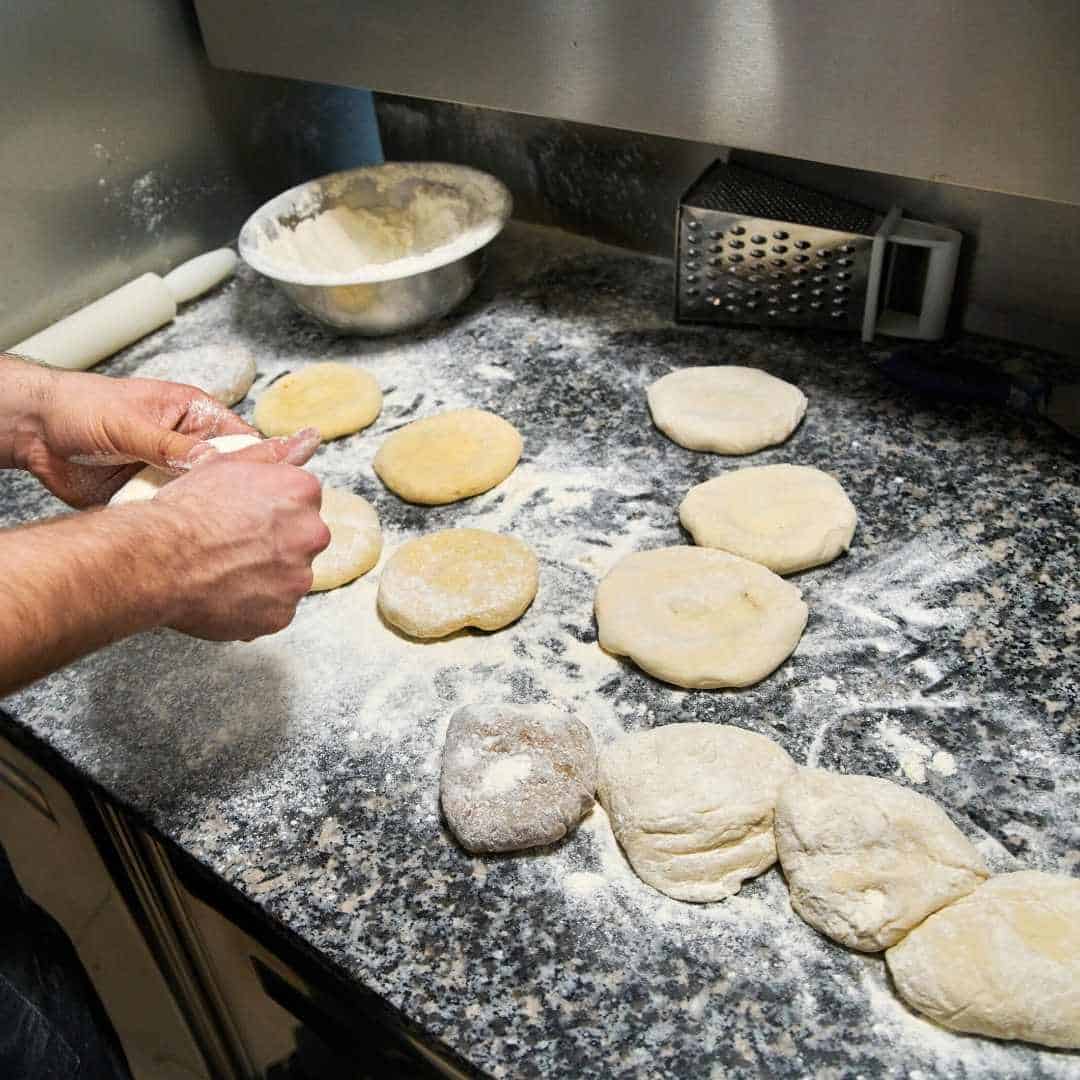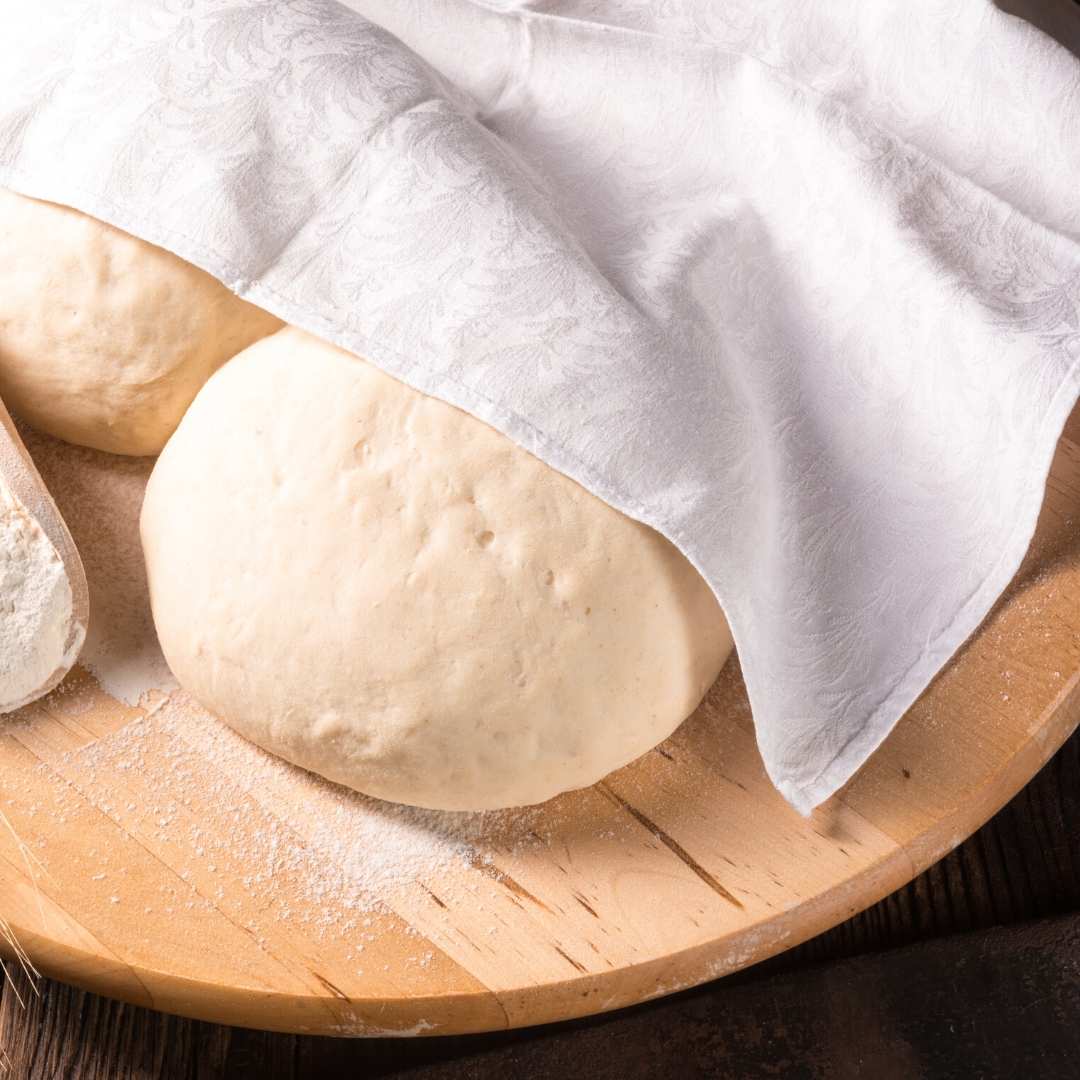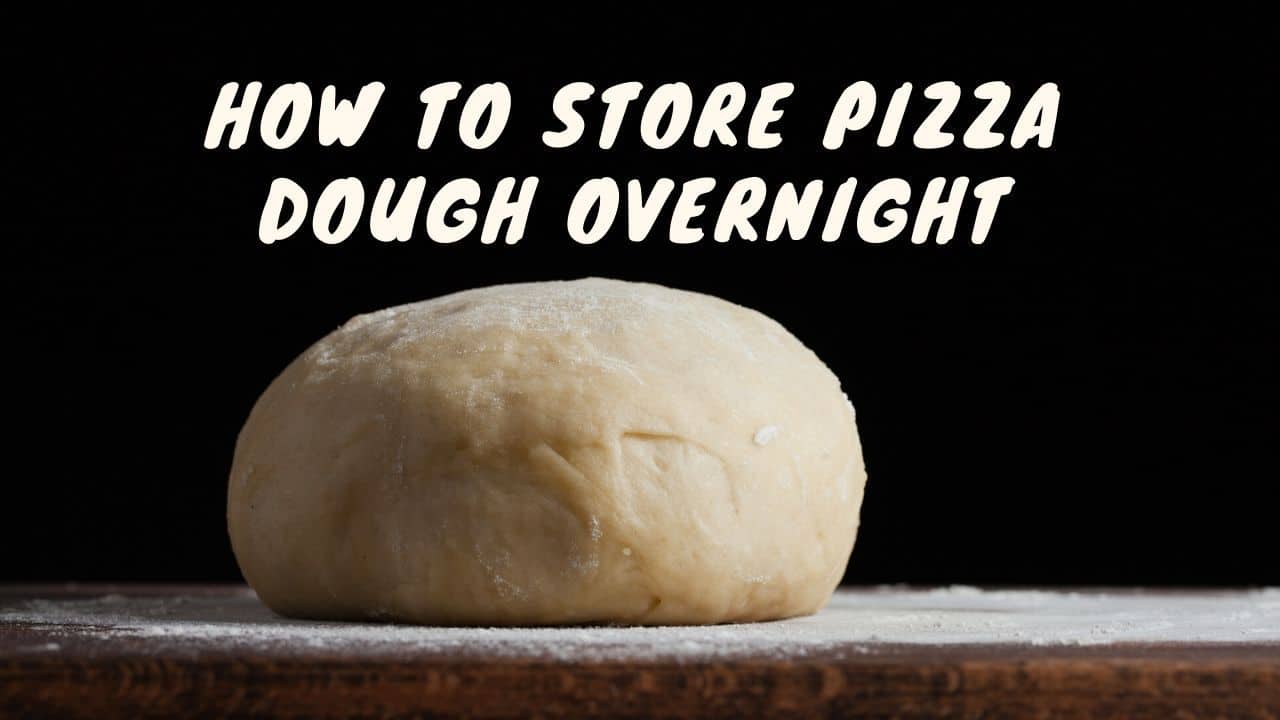Sometimes, your lifestyle gets in the way of cooking. You might have prepared pizza dough the day before you need it, or perhaps you made too much and are looking to store it for the next few days.

If you have some pizza dough that you need to store for later but are unsure about the best methods to make sure it stays fresh, then this guide is for you.
Best Ways To Store Pizza Dough For Later

Pizza dough requires low temperatures to be stored overnight. Keeping the dough in the fridge will stop the yeast from over-fermenting and eventually dying. If you don’t intend to use it in a few days, then it is best to freeze the dough for long-term storage.
Storing It In The Fridge
- Mix in all the ingredients and knead the dough.
- Let it rise.
- After the first rise, divide it into small, round shapes – enough for each pizza.
- Grease the baking pan and place your dough balls on top, leaving some space between each one.
- Then, gently cover the dough balls with plastic cling film and place the pan in the back of the fridge to avoid temperature fluctuations.
- Use within 48 hours.
You can also refrigerate your dough right after kneading. Place it in a lightly oiled, large mixing bowl, cover with plastic wrap, and put it in the fridge. In this case, think of the time in the fridge as the first rise.
Storing It In The Freezer

- Right after the dough has been kneaded, divide it into balls for your pizza base.
- Flatten the dough balls into discs (don’t let them rise).
- Place discs on a lightly greased baking sheet.
- Put the sheet with the discs in the freezer.
- After a few hours, once the discs are frozen, transfer them into freezer bags. Portion them accordingly.
- Seal the bags and put them back in the freezer.
- Use within 2-3 weeks.
For an added layer of protection, you can also store those bags together in an airtight container.
Freezing pizza dough is a good option if you want to pre-make multiple portions at once that can be baked over several weeks.
If you are making your dough to be frozen, then I would suggest using slightly more yeast than is recommended on the recipe. Freezing will inevitably destroy some of the yeast cells. Using slightly more yeast will ensure that the dough will rise adequately after thawing it.
How To Thaw Frozen Pizza Dough?
- Take the bag out of the freezer, put it in the fridge, and leave it till the next day.
- Take the dough balls/discs out of the fridge for about 30 min before making your pizza.
- Place them on a lightly greased baking sheet and let them rise for 30-40 min.
- Put it on the work counter, stretch it out, and make your pizza.
Read Also: How to Reheat Lasagna So It’s Safe and Delicious
Can I Leave Pizza Dough Overnight At Room Temperature?

Pizza dough is made up of water, flour, yeast, and a bit of oil. Typically, after a few hours, it will double in size and is ready for baking.
But, when you leave the dough on a warm kitchen counter for more than 8-10 hours, it will rise to its maximum capacity and then start to deflate slightly. However, it will still remain leavened.
In general, dough left at room temperature overnight is still edible and safe to use the next day. However, the texture and flavor of the pizza crust might turn out a bit different. It might have a slightly sour, fermented taste and a thicker texture.
If you have no choice but to leave it at room temperature overnight, then cover it up and leave it by the window, away from heating elements, to keep it as cool as possible.
The following day, if the dough does not look right or has developed an unusual smell, then don’t use it. If your recipe requires milk, yogurt, sour cream, or eggs, then it is definitely not safe to leave it overnight at room temperature and must be stored in the fridge.
If that is not an option, then you should consider pre-cooking your pizza base the day before you need it.
Quick Summary
If you intend to make several portions that you can use over an extended period, then you will want to store it in the freezer in an airtight container. If you simply need your dough to keep for a few days, then storing it in the fridge in a covered container is your best bet.
Related article: Bake like a professional baker – here is how to keep your yeast alive longer.
